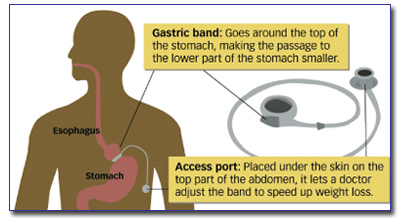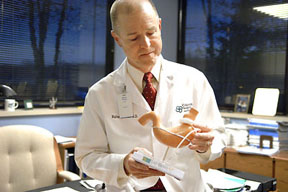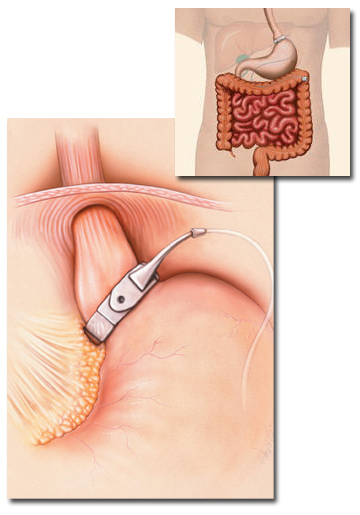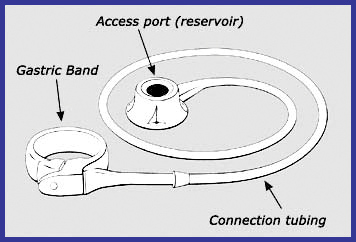Source: Columbia Trbune, By T.J. GREANEY
A year and a half ago, John Dorsey was suffering from obesity and Type
2 diabetes. He was taking 50 units of insulin, two oral antibiotics
and another prescription drug every day to keep his blood sugar under
control.
He also weighed 406 pounds.

"If I hadn’t done something, I probably would have died," said Dorsey,
49, who works as a nurse in Cooper County.
So Dorsey had a medical procedure called Lap-Band surgery, where
doctors insert a patented device to narrow the top of the stomach and
forcibly reduce food intake. Within a month, Dorsey was no longer
taking insulin, and within two months he was off all diabetes
medication.
"I consider it a huge benefit," Dorsey said. "Losing weight helped me
get rid of diabetes. I know it’s not going to work exactly the same
for everybody. But for me, my blood sugar and high blood pressure were
both related to my weight, so when I lost weight they fell back in
line."
 |
| Walter Peters, a surgeon with Columbia
Surgical Associates, displays in his office last week a
model showing how a Lap-Band device fits on a patient’s
stomach to provide for weight management. A recent study
shows that patients who have the surgical procedure are
more likely to be cured of Type 2 diabetes. |
|
These days he says he’s 140 pounds lighter and his diabetes has
vanished.
Dorsey is not alone. In a new study published in the Journal of the
American Medical Association, Australian researchers say that patients
who had the Lap-Band procedure lost an average of 46 pounds and were
five times more likely to be cured of diabetes than those who had
classic treatment.
It’s the first study of its type to link the weight-loss operation to
a diabetes cure.
"This is just one more piece of evidence where we can say, ‘We knew
this was good.’ Now we’re starting to be able to prove it," said
Walter Peters, a surgeon at Boone Hospital Center and Columbia
Surgical Associates who with his partner performs about three such
procedures a week.
During each surgery, doctors insert a silicone band known as a
Lap-Band to constrict the top of the patient’s stomach. After surgery,
patients who previously ate large amounts report being full after
meals of about 6 ounces. The size of the band can be increased or
decreased as needed after surgery, and patients report being able to
return to work in as little as two days.
back to top

The surgery is similar in its results to gastric bypass (sometimes
known as stomach stapling), but proponents of the 45-minute Lap-Band
procedure say it is less risky than the two-hour bypass surgery,
which requires surgeons to staple a portion of the stomach closed
and attach it to the small intestine.
No similar study of diabetes reduction rates has been conducted with
patients who have had gastric bypasses.
For doctors who have witnessed the results of Lap-Band surgery, news
of its effect on diabetes is no surprise. Boone Hospital Center
surgeon James Pitt began performing the Lap-Band surgery in 2004 and
says weight loss is key to "putting diabetes in remission."
"Losing the fat tissue changes the metabolic composition of your
body," Pitt said. "It decreases your insulin resistance and helps
your body work more the way it’s supposed to."
Pitt has firsthand knowledge. He had the procedure done on himself
in June 2006 and is now 50 pounds lighter, down from 280 pounds.
"I’m not my best patient. I still have problems with stress eating
and all the other reasons we eat, but it helps a lot," he said.
"It’s a lot easier not to eat when you’re not hungry all the time."
He said he hopes the new research will help persuade more insurance
companies to pay for the $11,500 procedure.
back to top

"It’s about 50-50 right now as far as people who pay for it themselves
and people who have insurance coverage," he said.
Dorsey was one of those who paid for the procedure out of pocket but
says he’d do it again.
"Before I went into surgery, they mentioned" it might help control
diabetes, he said. "But they didn’t emphasize it. That’s not the main
reason for having the surgery. You do it for a lifestyle change and
controlling your weight."
|




